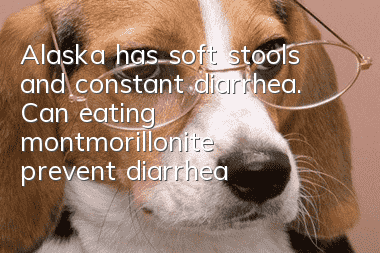What to do if your pet dog is anemic? How to treat anemia in your pet dog!

Can pet dogs also be anemic? Yes, anemia not only occurs in humans, but dogs can also suffer from it, but there are still many owners who don’t understand why dogs still have anemia symptoms. As the number of people raising animals in China increases, their health is also being taken seriously. So what are the symptoms of anemia in pet dogs, and what should you do? The following editor will give you the treatment methods for anemia in pet dogs!
Anemia means that the number of fiber cells, hemoglobin content and hematocrit volume (specific volume) in unit volume of blood are lower than normal values. The clinical manifestations are characterized by pale mucous membranes, accelerated rate and breathing, and general weakness.
Anemia can be divided into hemorrhagic anemia, hemolytic anemia, nutritional anemia and aplastic anemia
1. Hemorrhagic anemia
Cause:Acute hemorrhagic anemia occurs when trauma or surgery causes rupture of internal organs (such as liver, spleen, vena artery and vena cava) and external blood vessels, causing massive bleeding, resulting in a sudden decrease in the body's hemolytic capacity.
Chronic hemorrhagic anemia is mainly due to chronic inflammation of the stomach, intestines, lungs, kidneys, bladder, and uterus. Common symptoms: visible mucous membranes, pale skin, rapid heartbeat, and general muscle weakness. Symptoms are proportional to the amount of bleeding. Excessive bleeding may cause collapse, restlessness, decreased blood pressure, coldness in the limbs, ears and nose, unsteady gait, and muscle tremors. In the later stage, drowsiness, coma, and shock may be seen.
For dogs with small amounts of bleeding or chronic bleeding, the initial symptoms are not obvious. However, the sick dog can gradually lose weight, and the visible mucosa gradually develops from light red to white. It is listless, has general weakness, lethargy, is inactive, has a fast and weak pulse, and has shallow breathing. Slight edema of the lower jaw and limbs is often seen. Severe cases can lead to shock, heart failure and death.
Diagnosis: Based on clinical symptoms, red blood cell count and hematocrit examination can confirm the diagnosis.
Treatment: Stop bleeding and restore hemolysis.
① For traumatic bleeding, ligation, compression, and tourniquet can be used to stop bleeding. For bleeding at the end of the limbs, owners can use a tourniquet to stop the bleeding and immediately send them to a veterinary hospital for treatment.
② Injection of hemostatic drugs: hemostasis 25 mg/kg body weight; vitamin K 30.4 mg/kg body weight; vitamin K 11 mg/kg body weight; coagulopathy 1.5 mg/kg body weight.
③ To supplement hemolysis, dextran, glucose, compound saline, and amino acid preparations can be infused intravenously. Veterinary hospitals with conditions should provide blood transfusion therapy.
2. Hemolytic anemia
Anemia caused by massive destruction of red blood cells due to various reasons, calledIt is hemolytic anemia.
Cause:
① Caused by infectious factors. Such as leptospirosis, herpes pathogens, trypanosomiasis, hemolytic streptococcus infection, etc.
②Toxic diseases. Heavy metal poisoning such as: lead, copper, arsenic, mercury, etc.; chemical drug poisoning: benzene, phenol, sulfonamide, etc. Hemolytic anemia can also be caused by police dogs inhaling TNT explosives while performing tasks.
③Antigen-antibody reaction. Hemolytic anemia in newborn dogs. Because the blood type of the newborn is different from that of the mother dog, an antigen-antibody reaction occurs after ingesting breast milk, resulting in hemolytic anemia in the puppies. Transfusion of heterotypic blood types can also cause hemolysis.
Other factors, such as febrile disease, lymphosarcoma, myeloid leukemia, plasma hemoglobinemia, red blood cell pyruvate kinase deficiency and other factors can cause hemolytic anemia.
Symptoms:
The main symptoms are visible yellowing of mucous membranes, yellowing of the corners of the skin and mouth, depression, weakness in movement, and weight loss. In the later stage, visible yellowing of the mucous membranes, lethargy, hemoglobinuria, and body weight loss.
Treatment:
Expand the hemolysis volume, remove the cause, and treat symptoms.
Rehydration and blood transfusion therapy. For toxic diseases, antidotes are given; for parasitic infections, insecticides are given for treatment. Also combined with hormonal therapy, such as cortisone, prednisone, and dexamethasone.
3. Nutritional anemia
Nutritional anemia refers to anemia caused by the lack of certain hematopoietic substances that affects the production of red blood cells and hemoglobin.
Cause:
Mainly caused by protein, iron, copper, cobalt, and vitamin deficiencies.
① Protein deficiency: caused by insufficient protein intake by animals or chronic digestive dysfunction.
② Trace element deficiency: iron, copper, and cobalt deficiency. Clinically, iron deficiency anemia is common. Iron is an essential component for hemoglobin synthesis; copper deficiency can also lead to reduced hemoglobin synthesis.
③ Vitamin deficiency: Deficiency of vitamin B1, vitamin B12, vitamin B6, folic acid, niacin, etc. can lead to disorders in the production of red blood cells and hemoglobin synthesis, resulting in nutritional anemia.
Most of the above factors are caused by the dog's single food, chronic digestive tract diseases and intestinal parasitic diseases, which cause intestinal absorption dysfunction, leading to nutritional anemia over time.
Symptoms:
Nutritional anemia develops slowly and mainly manifests as progressive weight loss and nutritional deficiencies.bad. Physical weakness, abdominal curling, rough coat, pale mucous membranes, high degree of weakness in movement in the later stage, shaking, difficulty in standing up after falling to the ground, until lying on the ground and complete body failure.
Treatment: Strengthen feeding, supplement hematopoietic substances, and provide protein-rich and vitamin-rich foods.
Ferrous sulfate 50 mg/kg body weight, taken orally 2-3 times/day. Cobalt chloride 0.3% solution, 3-5 ml/day orally.
Vitamin B15-10 mg/kg body weight, vitamin B125-10 ml/kg body weight, mixed intramuscular injection, 1 time/day. Folic acid 1-3 mg/kg body weight, taken orally, once a day.
In addition, glucose and various amino acid preparations can be supplemented to help restore body function.
- Diagnosis and treatment of dog fever
- What should I do if my pet dog is allergic to vaccines?
- How to brush your dog’s teeth? What should I do if my dog refuses to brush his teeth?
- What should I do if my dog keeps scratching and biting?
- What are the most common oral and dental diseases in dogs? Dog Oral Care!
- What are the training tips for Australian Cattle Dogs?
- Research shows that dogs raised in cities are more likely to develop social anxiety than dogs raised in rural areas
- How to train a Great Pyrenees
- Why do dogs sigh?
- What are the symptoms of dystocia in dogs, and what should I do if my dog has dystocia?



